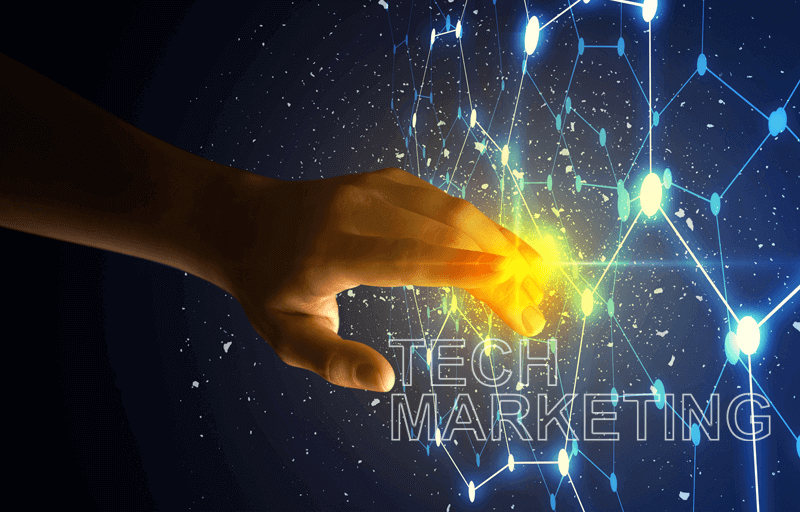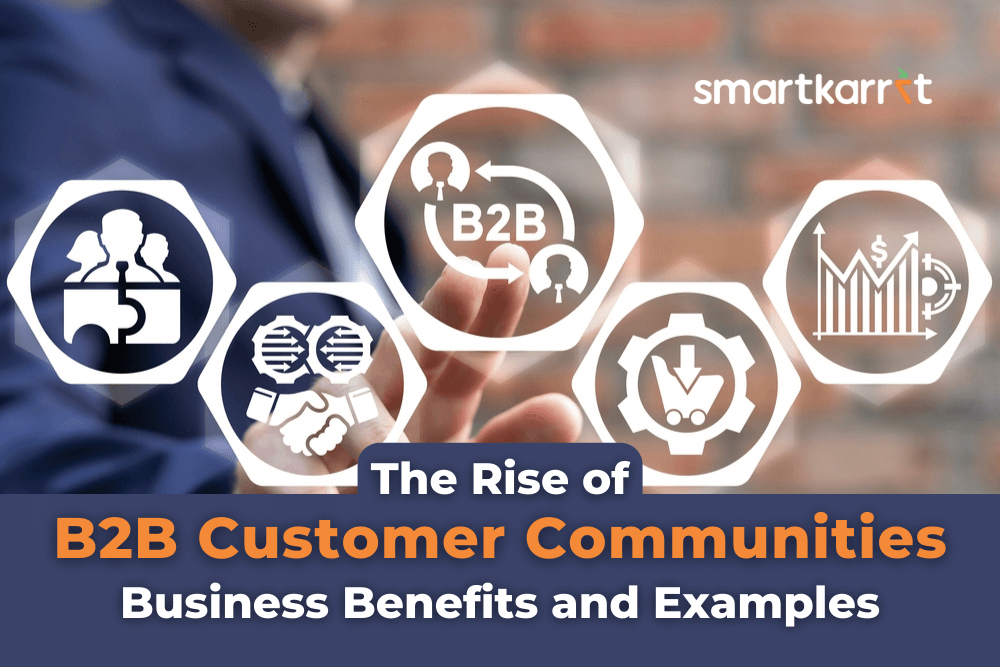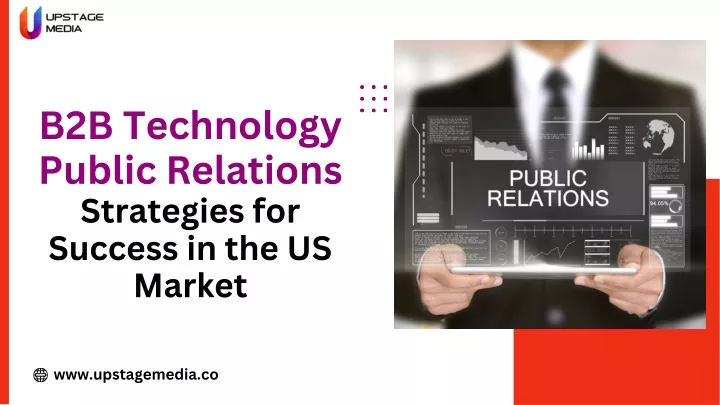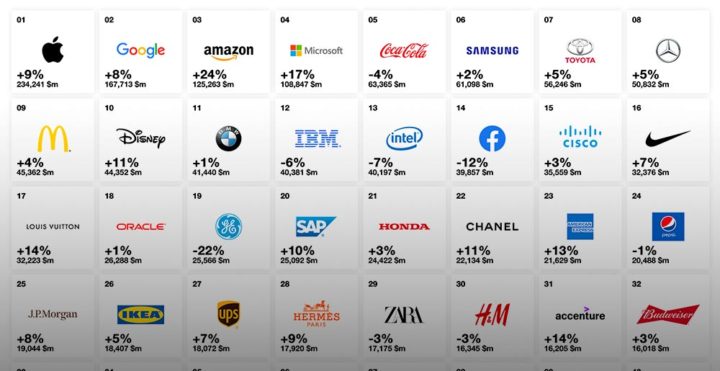B2B Technology Marketing: Strategies for Success
B2B technology marketing is a dynamic and ever-evolving field, driven by the rapid pace of innovation and the changing demands of tech-savvy buyers. Understanding the unique challenges and opportunities within […]

B2B technology marketing is a dynamic and ever-evolving field, driven by the rapid pace of innovation and the changing demands of tech-savvy buyers. Understanding the unique challenges and opportunities within this space is crucial for businesses looking to thrive in the digital age.
From leveraging AI and automation to crafting compelling content and building lasting relationships, B2B technology marketers must adapt their strategies to navigate the complex landscape of today’s market. This guide explores the key trends, best practices, and insights that can help businesses effectively reach their target audience and achieve their marketing goals.
The Evolving Landscape of B2B Technology Marketing
The B2B technology marketing landscape is constantly evolving, driven by advancements in technology and changing buyer behavior. Marketers are faced with new challenges and opportunities as they navigate this dynamic environment.
Impact of Emerging Technologies
Emerging technologies like AI, automation, and data analytics are significantly impacting B2B marketing strategies. These technologies enable marketers to personalize their campaigns, automate repetitive tasks, and gain deeper insights into customer behavior.
- Artificial Intelligence (AI): AI-powered tools can personalize content, automate marketing tasks, and predict customer behavior. For example, AI-driven chatbots can provide instant customer support, while predictive analytics can identify potential leads and optimize marketing campaigns.
- Automation: Marketing automation tools streamline repetitive tasks, freeing up marketers to focus on strategic initiatives. These tools can automate email campaigns, social media posting, and lead nurturing, increasing efficiency and improving ROI.
- Data Analytics: Data analytics helps marketers understand customer behavior, identify trends, and optimize campaigns. By analyzing data from various sources, marketers can gain insights into customer preferences, buying patterns, and engagement levels.
Comparison of Traditional and Modern Marketing Approaches
Traditional marketing approaches relied on mass marketing and print media to reach potential customers. Modern digital strategies leverage online channels, personalized content, and data-driven insights to engage with target audiences.
| Traditional Marketing | Modern Digital Marketing |
|---|---|
| Mass marketing | Targeted marketing |
| Print media | Online channels (websites, social media, email) |
| Limited data insights | Data-driven insights |
| One-way communication | Two-way communication |
Key Trends Shaping the B2B Technology Marketing Landscape
Several key trends are shaping the B2B technology marketing landscape:
- Account-Based Marketing (ABM): ABM focuses on targeting specific accounts rather than a broad audience. This approach involves personalized communication and tailored content to engage with key decision-makers within target accounts.
- Content Marketing: Content marketing involves creating and sharing valuable, relevant, and consistent content to attract and engage a target audience. This approach helps build brand awareness, establish thought leadership, and nurture leads.
- Video Marketing: Video marketing is becoming increasingly popular in B2B, as it provides a more engaging and impactful way to communicate with customers. Videos can be used for product demonstrations, webinars, and case studies.
- Social Media Marketing: Social media platforms are essential for B2B marketers to connect with potential customers, share industry insights, and build relationships. Social media can be used for lead generation, brand awareness, and customer engagement.
- Influencer Marketing: Influencer marketing involves partnering with industry thought leaders to promote products or services. Influencers can reach a large and engaged audience, building trust and credibility for brands.
Understanding the B2B Technology Buyer Journey
Understanding the B2B technology buyer journey is crucial for effective marketing. It involves mapping out the different stages a prospect goes through before making a purchase decision. By understanding each stage, B2B technology marketers can tailor their messaging and content to resonate with prospects at every touchpoint.
Stages of the B2B Technology Buyer Journey
The B2B technology buyer journey is typically divided into four distinct stages:
- Awareness: Prospects become aware of a problem or need that technology can address.
- Consideration: Prospects research different solutions and evaluate potential vendors.
- Decision: Prospects narrow down their options and make a final decision.
- Retention: Prospects become loyal customers and advocate for the technology.
Engaging Prospects at Each Stage, B2b technology marketing
Here’s how B2B technology marketers can effectively engage prospects at each stage of the buyer journey:
Awareness Stage
- Content Examples: Blog posts, white papers, infographics, webinars, social media posts.
- Engagement Strategies: Share valuable content that educates prospects about industry trends, challenges, and potential solutions. Focus on creating awareness about the problem or need that your technology addresses.
Consideration Stage
- Content Examples: Case studies, product demos, comparison guides, online calculators, interactive tools.
- Engagement Strategies: Provide detailed information about your technology’s features, benefits, and use cases. Showcase how your technology can solve the specific problems identified in the awareness stage. Encourage prospects to engage with your content through interactive elements and personalized experiences.
Decision Stage
- Content Examples: Testimonials, customer reviews, pricing information, free trials, product demos, ROI calculators.
- Engagement Strategies: Provide clear and compelling evidence of your technology’s value. Offer free trials or demos to allow prospects to experience the technology firsthand. Address any remaining concerns or objections. Make it easy for prospects to contact you for a consultation or to purchase the technology.
Retention Stage
- Content Examples: Newsletters, webinars, customer success stories, community forums, loyalty programs.
- Engagement Strategies: Provide ongoing support and resources to help customers maximize their investment in your technology. Develop a strong customer relationship through personalized communication, feedback mechanisms, and exclusive benefits. Encourage customers to become advocates for your technology by sharing their success stories and participating in online communities.
Content Formats and Channels
Here’s a table showcasing the key content formats and channels suitable for each stage of the buyer journey:
| Stage | Content Formats | Channels |
|---|---|---|
| Awareness | Blog posts, white papers, infographics, webinars, social media posts | Industry blogs, social media platforms, search engine optimization (), paid advertising, industry events |
| Consideration | Case studies, product demos, comparison guides, online calculators, interactive tools | Website, landing pages, email marketing, webinars, industry forums, online communities |
| Decision | Testimonials, customer reviews, pricing information, free trials, product demos, ROI calculators | Website, landing pages, sales calls, email marketing, online chat, live demos |
| Retention | Newsletters, webinars, customer success stories, community forums, loyalty programs | Email marketing, customer portal, online community, social media, events, customer support |
Content Marketing Strategies for B2B Technology
Content marketing is a crucial aspect of B2B technology marketing, enabling businesses to establish thought leadership, build trust, and attract potential customers. By creating and sharing valuable, relevant, and consistent content, B2B technology companies can educate their target audience, nurture leads, and ultimately drive conversions.
Content Calendar for B2B Technology Marketing
A well-structured content calendar is essential for ensuring a consistent flow of high-quality content across various platforms. This calendar should Artikel a mix of content types, including blog posts, white papers, case studies, webinars, infographics, and social media updates.
- Blog Posts: Regular blog posts provide valuable insights into industry trends, technical advancements, and best practices. They can cover a wide range of topics, from product updates and feature announcements to practical tips and advice for users.
- White Papers: White papers offer in-depth analysis and research on specific topics, providing valuable information for decision-makers. They can delve into complex technical concepts, industry challenges, and emerging technologies, establishing the company as a thought leader.
- Case Studies: Case studies showcase the success stories of real customers using the company’s technology. They provide concrete examples of how the product or service solves specific problems and delivers tangible results, building credibility and trust among potential buyers.
- Webinars: Webinars offer interactive sessions where experts share their knowledge and insights on relevant topics. They can cover technical demonstrations, product launches, industry trends, and best practices, engaging the audience and fostering deeper connections.
- Infographics: Infographics present complex data and information in a visually appealing and easily digestible format. They can be used to illustrate industry statistics, research findings, or key product features, making the content more engaging and memorable.
- Social Media Updates: Social media platforms provide a valuable channel for sharing short-form content, including news updates, blog post teasers, industry insights, and engaging visuals. Regular updates help maintain brand visibility and build a strong online presence.
Examples of High-Quality Content Formats
- White Paper Example: “The Future of Cloud Computing: A Comprehensive Guide to Infrastructure, Security, and Cost Optimization” – This white paper provides an in-depth analysis of cloud computing trends, challenges, and best practices, addressing the concerns of B2B technology buyers.
- Case Study Example: “How Company X Streamlined Its Operations and Increased Efficiency with Our AI-Powered Automation Platform” – This case study highlights the success story of a real customer, showcasing how the technology solved specific business problems and delivered measurable results.
- Webinar Example: “Building a Secure and Scalable Cloud Infrastructure: A Practical Guide for IT Professionals” – This webinar offers valuable insights and practical advice on building and managing secure cloud environments, addressing a key concern for B2B technology buyers.
- Blog Post Example: “5 Essential Tips for Choosing the Right Data Analytics Platform for Your Business” – This blog post provides practical advice and guidance for B2B technology buyers, helping them navigate the complex world of data analytics solutions.
Addressing Specific Pain Points and Challenges
Content marketing for B2B technology should focus on addressing the specific pain points and challenges faced by potential buyers. By understanding their needs, concerns, and decision-making processes, businesses can create content that resonates with their target audience.
- Security Concerns: B2B technology buyers are increasingly concerned about data security and privacy. Content addressing these concerns, such as white papers on cybersecurity best practices or case studies showcasing the security features of a product, can build trust and confidence.
- Cost Optimization: B2B technology buyers are always looking for ways to optimize their costs. Content addressing this need, such as white papers on cost-effective solutions or case studies demonstrating ROI, can be highly effective.
- Integration Challenges: B2B technology buyers often face challenges integrating new solutions with existing systems. Content addressing this issue, such as blog posts on integration best practices or webinars on seamless integration, can be valuable.
- Lack of Expertise: B2B technology buyers may lack the technical expertise to fully understand complex solutions. Content addressing this need, such as white papers explaining technical concepts or webinars offering practical training, can be helpful.
Leveraging Digital Channels for B2B Technology Marketing
In the modern B2B landscape, digital channels have become indispensable for reaching and engaging with technology buyers. These channels provide a cost-effective way to target specific audiences, measure campaign performance, and build relationships with potential customers. This section explores the effectiveness of various digital channels, including , social media, and email marketing, for B2B technology brands.
Effectiveness of Digital Channels for B2B Technology Marketing
Each digital channel offers unique advantages and disadvantages for B2B technology brands. Here’s a breakdown of their effectiveness:
Search Engine Optimization ()
is the process of optimizing your website and content to rank higher in search engine results pages (SERPs). For B2B technology companies, is crucial for driving organic traffic to your website, generating leads, and building brand awareness.
- Pros: High ROI, long-term results, builds brand credibility, targets qualified leads, measurable results.
- Cons: Time-consuming, requires technical expertise, competitive landscape, algorithm updates can impact rankings.
Social Media Marketing
Social media platforms provide a powerful way to connect with your target audience, share valuable content, and build relationships. For B2B technology brands, social media can be used to generate leads, nurture relationships, and increase brand visibility.
- Pros: Targeted audience reach, cost-effective, engagement opportunities, brand storytelling, real-time communication.
- Cons: Time-consuming content creation, managing multiple platforms, algorithm changes, limited direct sales potential.
Email Marketing
Email marketing remains a highly effective channel for B2B technology companies to nurture leads, promote products and services, and build relationships. It allows for personalized communication and targeted messaging.
- Pros: High ROI, personalized communication, targeted messaging, trackable results, cost-effective.
- Cons: High unsubscribe rates, spam filters, inbox competition, requires email list building, can be time-consuming.
Best Practices for Optimizing Digital Channels
To maximize ROI on digital channels, B2B technology brands should adopt best practices that enhance campaign effectiveness.
Optimization Best Practices
- Research: Identify relevant s that your target audience is searching for. Use tools like Google Planner and SEMrush to conduct thorough research.
- On-Page Optimization: Optimize your website content, including title tags, meta descriptions, headings, and images, for your target s. Ensure your website is mobile-friendly and loads quickly.
- Off-Page Optimization: Build high-quality backlinks from reputable websites to improve your website’s authority and ranking. Engage in content marketing, social media promotion, and guest blogging to earn backlinks.
- Content Marketing: Create valuable, informative, and engaging content that attracts your target audience. This could include blog posts, white papers, case studies, webinars, and infographics.
- Technical : Ensure your website is technically sound by optimizing site speed, mobile responsiveness, and XML sitemaps. Use tools like Google Search Console to monitor technical issues.
Social Media Marketing Best Practices
- Target Audience: Identify your ideal customer personas and tailor your content and messaging to their interests and needs. Use social media advertising to reach specific demographics and interests.
- Content Strategy: Develop a content calendar that Artikels your social media posts, including topics, formats, and scheduling. Create a mix of content, including updates, blog posts, videos, infographics, and interactive content.
- Engagement: Respond to comments and messages promptly, engage in conversations, and foster a sense of community. Run contests and giveaways to increase engagement and generate leads.
- Analytics: Track your social media performance using tools like Facebook Insights, Twitter Analytics, and Google Analytics. Analyze your data to identify what’s working and what needs improvement.
- Social Listening: Monitor social media conversations about your brand, industry, and competitors. Use this information to understand customer sentiment, identify trends, and respond to any negative feedback.
Email Marketing Best Practices
- Email List Building: Build a high-quality email list by offering valuable content, lead magnets, and opt-in forms. Use a double opt-in process to ensure email addresses are valid.
- Segmentation: Segment your email list based on demographics, interests, and behavior. This allows you to send targeted messages that are more relevant to each subscriber.
- Personalization: Use personalization tags to include subscribers’ names, company names, and other relevant information in your emails. This makes your emails feel more personal and engaging.
- A/B Testing: Test different subject lines, email content, and call-to-actions to see what performs best. Use the results to optimize your future campaigns.
- Mobile Optimization: Ensure your emails are mobile-friendly and display correctly on all devices. Use responsive email templates or design your emails with mobile devices in mind.
Building Strong Relationships with B2B Technology Buyers: B2b Technology Marketing
In the competitive landscape of B2B technology, building strong relationships with buyers is crucial for success. This goes beyond simply selling products or services; it’s about establishing trust, understanding their needs, and providing value throughout the entire customer journey.
Nurturing Leads and Fostering Long-Term Relationships
Nurturing leads and fostering long-term customer relationships is a critical aspect of building strong relationships with B2B technology buyers. This involves providing value through consistent communication, personalized content, and ongoing support.
- Email Marketing: Segment your audience based on their interests and tailor email content to their specific needs. Provide valuable insights, industry updates, and exclusive offers to keep them engaged.
- Webinars and Events: Host webinars and events that address key industry challenges and provide practical solutions. These events offer opportunities to showcase expertise and build thought leadership.
- Content Marketing: Create high-quality content that addresses the pain points and challenges of your target audience. This could include blog posts, white papers, case studies, and infographics.
- Social Media Engagement: Actively engage with your audience on social media platforms. Respond to comments, participate in industry conversations, and share valuable content.
- Customer Success Programs: Implement customer success programs that provide ongoing support and guidance to ensure customer satisfaction. This can involve dedicated account managers, onboarding resources, and regular check-ins.
Personalized Communication and Customer Service
Personalized communication and exceptional customer service are essential for building trust and loyalty among B2B technology buyers. This involves understanding their individual needs, providing tailored solutions, and exceeding their expectations.
“Personalized communication is key to building strong relationships with B2B technology buyers. By understanding their individual needs and providing tailored solutions, you can create a more meaningful and lasting connection.”
- Personalized Content: Tailor your marketing messages and content to the specific interests and needs of each buyer. Use data and insights to understand their preferences and provide relevant information.
- Proactive Communication: Reach out to buyers proactively to offer support, provide updates, and address any concerns they may have. This demonstrates a commitment to their success.
- Responsive Customer Service: Provide prompt and helpful customer service. Ensure that all inquiries are addressed quickly and efficiently, and that customers feel valued and supported.
- Feedback Collection: Regularly collect feedback from customers to understand their needs and areas for improvement. Use this feedback to enhance your products, services, and customer experience.
Measuring and Optimizing B2B Technology Marketing Performance

In the dynamic realm of B2B technology marketing, success hinges on a data-driven approach. By meticulously tracking key metrics and leveraging data-driven insights, businesses can optimize their campaigns, enhance ROI, and achieve sustainable growth.
Identifying Key Metrics for Measuring B2B Technology Marketing Success
It’s crucial to define and track key metrics that align with your marketing objectives. Here are some vital metrics to consider:
- Website Traffic: Analyze website traffic metrics such as unique visitors, bounce rate, and time spent on site to gauge audience engagement and understand their interests.
- Lead Generation: Track the number of leads generated, lead quality, and conversion rates to assess the effectiveness of your lead generation efforts.
- Sales Pipeline: Monitor the progress of leads through the sales funnel, including the number of qualified leads, opportunities, and closed deals, to understand the effectiveness of your marketing efforts in driving sales.
- Customer Acquisition Cost (CAC): Calculate the cost of acquiring a new customer to optimize marketing spend and ensure profitability.
- Return on Investment (ROI): Measure the return on your marketing investment by comparing the revenue generated with the marketing expenses incurred.
- Brand Awareness: Track social media mentions, brand sentiment, and website traffic from social media platforms to gauge brand awareness and reach.
- Content Performance: Analyze content engagement metrics such as website visits, downloads, shares, and comments to understand the effectiveness of your content marketing strategy.
Analyzing Data and Deriving Actionable Insights
Data analysis is crucial for extracting valuable insights that can inform your marketing strategies. Here are some key strategies:
- Data Visualization: Utilize data visualization tools to create charts, graphs, and dashboards that provide a clear and concise overview of your marketing performance.
- Segmentation: Segment your audience based on demographics, interests, and behaviors to tailor your marketing messages and campaigns to specific groups.
- A/B Testing: Conduct A/B testing on different elements of your marketing campaigns, such as headlines, call-to-actions, and landing pages, to identify the most effective variations.
- Attribution Modeling: Use attribution modeling to understand which marketing channels and touchpoints contribute most to conversions and optimize your marketing spend accordingly.
Optimizing Campaigns Based on Data-Driven Insights
By leveraging data-driven insights, you can refine your marketing strategies to maximize ROI and achieve your marketing goals.
- Content Optimization: Analyze content performance metrics to identify popular topics and formats. Use this information to create more engaging and relevant content that resonates with your target audience.
- Channel Optimization: Track the performance of different marketing channels to identify the most effective ones for reaching your target audience. Allocate your marketing budget accordingly.
- Lead Nurturing: Use data to segment leads and personalize your communication based on their interests and engagement levels. This can improve lead conversion rates and enhance customer relationships.
- Campaign Refinement: Continuously monitor campaign performance and make adjustments based on data insights. This iterative process helps to optimize campaigns for better results.
Closing Notes

In conclusion, B2B technology marketing demands a strategic and data-driven approach. By embracing emerging technologies, understanding the buyer journey, creating valuable content, and building strong relationships, businesses can effectively position themselves for success in this competitive and ever-evolving market. By focusing on delivering exceptional value and exceeding customer expectations, B2B technology marketers can drive growth, build brand loyalty, and ultimately achieve their marketing objectives.
B2B technology marketing thrives on innovation, which requires a strategic approach. Understanding the strategic management of technological innovation is crucial for B2B technology marketers to effectively identify, develop, and deploy new technologies that resonate with their target audience. By aligning marketing strategies with a clear innovation roadmap, B2B technology marketers can create a competitive advantage and drive sustainable growth.






